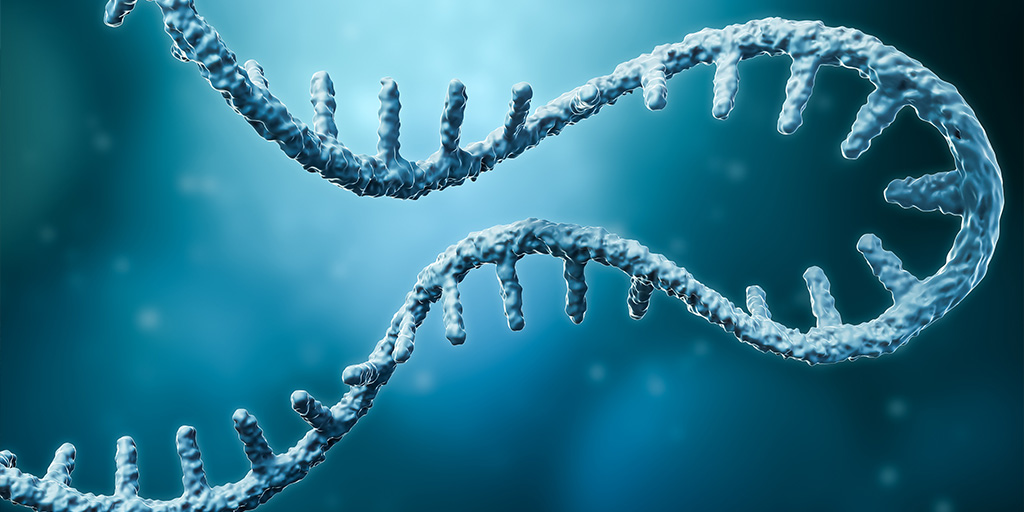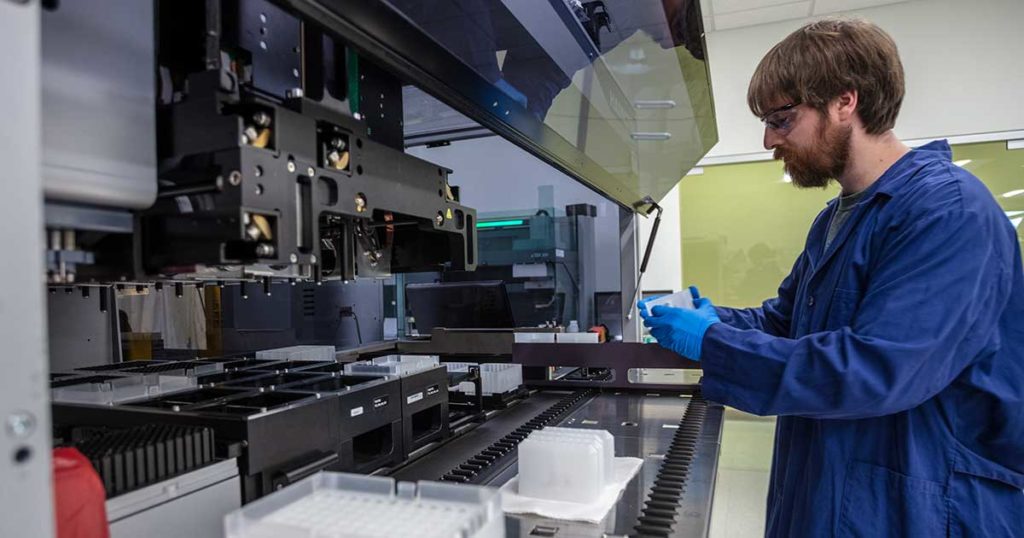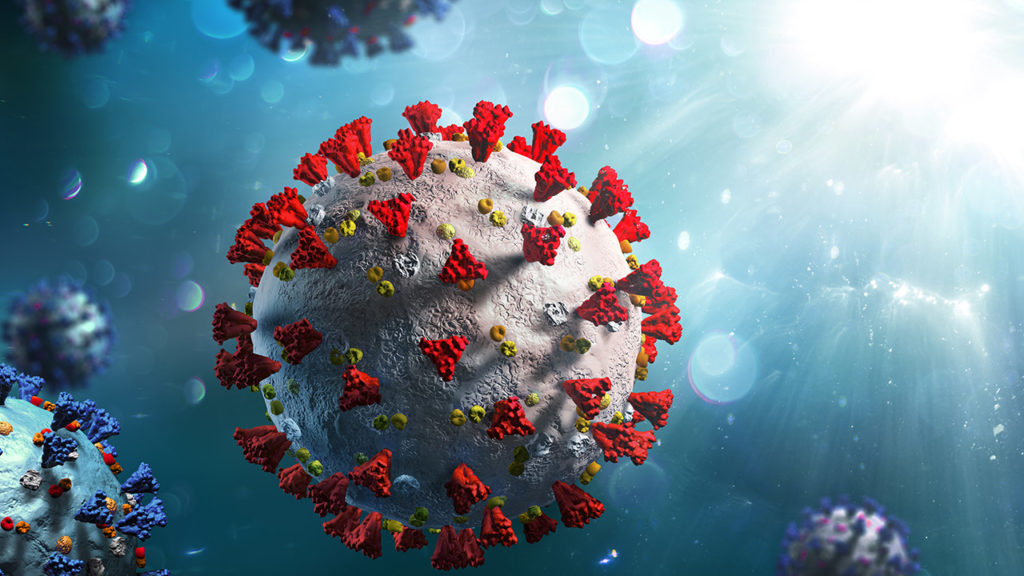
In recent years following the COVID-19 pandemic, RNA has gained attention for its successes and potential use in vaccines and therapeutics. One avenue of interest in RNA research is a non-coding class of RNA first identified almost 50 years ago, circular RNA (circRNA).
In 1976, Sanger et al. first identified circRNA in plant viroids, and later additions to the field found them in mice, humans, nematodes, and other groups. Unlike linear RNA, circRNA are covalently closed loops that don’t have a 5′ cap or 3′ polyadenylated tail. Following its discovery, researchers thought circRNA was the product of a rare splicing event caused by an error in mRNA formation leading to low interest in researching the subject (1).

In the early 2010s, following the development of high throughput RNA sequencing technology, Salzman et al. determined that circRNAs were not a result of misplicing, but a stable, conserved, and widely sourced form of RNA with biological importance. Since noncoding RNA makes up the majority of the transcriptome it’s an incredibly important field of study. We now recognize circRNAs for their potential as disease biomarkers and importance in researching human disease (2).
Understanding circRNA
To begin to understand circRNA, first we must dive into how it forms and how it compares to the linear RNA we might be more familiar with.
Formation of RNA begins with transcription of DNA to produce precursor messenger RNA (pre-mRNA) containing both exons and introns. RNA splicing is then necessary to remove introns and convert pre-mRNA into mature mRNA. Most pre-mRNA undergoes canonical (forward) splicing where a protein and RNA complex called the spliceosome removes introns and connects exons in a linear structure. CircRNAs are formed through backsplicing, a process facilitated by intronic complementary sequence pairing or RNA binding proteins (RBPs). Most backsplicing occurs when an upstream 3’ splice site joins to a downstream 5’ splice site (3).
The covalently closed loop-structure of circRNAs protects them from exonucleases and degradation. This makes them more stable than linear RNA. In clinical applications, this could address the susceptibility of mRNA vaccines to degradation (2).
Functions and Biological Roles
MicroRNA (miRNA) is a small single-strand RNA that controls gene expression by binding with messenger RNA (mRNA). CircRNAs contain miRNA binding sites and can function as miRNA sponge by sequestering miRNA and thus competing with mRNA-microRNA binding. miRNA sponging affects several disease pathways, including cancers and neurological disorders, and is seen in various tissue types. Researchers identified that one example, circCD44, promotes tumorigenesis in triple-negative breast cancer through sponging (4).
Research has also indicated that circRNAs can promote protein-protein interactions that are essential for regulating signal pathways as protein scaffolds (2). Additionally, several studies have suggested that a subset of circRNAs can even generate proteins (5).
Intronic circRNAs stay retained in the nucleus and function as transcriptional regulators of their parental genes (3, 6). This can have a major impact on human diseases such as cancer and diabetes. One study from the University of Lausanne in Switzerland explains one case of this where an insulin generated circRNA affects insulin secretion by binding to RBP TDP-43 (7).
Advancing circRNA Research

Following the successful development of mRNA vaccines used to combat the COVID-19 outbreak, interest in researching RNA vaccines and therapeutics has skyrocketed. The importance of this field of research is especially highlighted by the 2023 Nobel Prize in Physiology or Medicine being awarded to two professors, Katalin Karikó and Drew Weissman, who’s work led to the development of mRNA Covid vaccines.
However, there is still room for improvement with RNA vaccines. mRNA vaccines are composed of linear RNA, which as we discussed, is less stable than circRNA. As such, mRNA vaccines require specific storage and transport conditions. As we look to the future of vaccine and nucleic acid drug development, circRNA could provide a more stable solution that is less susceptible to degradation (2).
Being such a new field of research, our understanding of circRNA is constantly improving. Research shows they can function as miRNA sponges, promote protein-protein interactions, play a part in transcriptional regulation, and are potential biomarkers for human disease (1). Moving forward, further analysis is required to elucidate the functional mechanisms of circRNA and there is still a need for an effective circRNA delivery system.
Learn more about our RNA analysis product groups.
References:
1. Liu, X., et al. (2022). Circular RNA: An emerging frontier in RNA therapeutic targets, RNA therapeutics, and mRNA vaccines. J Control Release, 348, 84–94. https://doi.org/10.1016/j.jconrel.2022.05.043
2. Zhao, X., et al. (2022). Advances in Circular RNA and Its Applications. Int J Med Sci., 19(6), 975–985. https://doi.org/10.7150/ijms.71840
3. Obi, P., et al. (2021). The design and synthesis of circular RNAs, Methods, 196, 85-103. https://doi.org/10.1016/j.ymeth.2021.02.020
4. Misir, S., et al. (2022). Specific expression and functions of circular RNAs. Cell Death Differ 29, 481–491 (2022). https://doi.org/10.1038/s41418-022-00948-7
5. Xiao, M., et al. (2020). Biogenesis and Functions of Circular RNAs Come into Focus. Trends Cell Biol, 30(3), 226–240. https://doi.org/10.1016/j.tcb.2019.12.004
6. Zhou, W., et al. (2020). Circular RNA: metabolism, functions and interactions with proteins. Molecular Cancer, 19(1), 172. https://doi.org/10.1186/s12943-020-01286-3
7. Stoll, L., et al. (2020). A circular RNA generated from an intron of the insulin gene controls insulin secretion. Nat Commun 11, 5611. https://doi.org/10.1038/s41467-020-19381-w
Kerstin Hurd
Latest posts by Kerstin Hurd (see all)
- Revolutionizing Food Security: How Biotechnology Contributes to Sustainability and Safety - June 26, 2024
- Reviewing the Importance of circRNA - November 14, 2023
- Glowing Testimonies: A Review of NanoLuc® Use in Model Organisms - October 6, 2023
